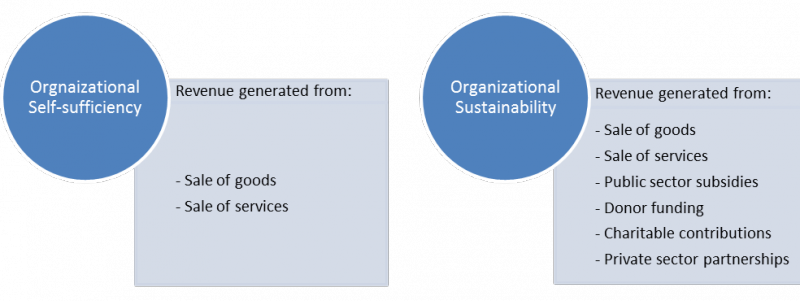Local organizations need resources in order to effectively implement programs that improve the lives of their beneficiaries. While some percentage of those resources may come from donors, donor funds are limited and continually shifting in response to a wide array of epidemiological, geographic, economic, and political factors.
Inevitably each organization faces a point when it must begin to plan for a greater measure of self-sufficiency. By mobilizing available resources in a strategic and thoughtful manner, and making this activity a key tenet of its mandate, it can sustain its work and continue promoting the health and well-being of its constituents.
In this trending topic, we present samples of foundational materials for resource mobilization. We encourage you to take some time and systematically look through each resource. Utilized as an overall set, this group of resources will provide you with a solid understanding of what it takes to develop an effective resource mobilization plan.
As always, we invite you to register on our site and to contribute your favorite resources to the Health COMpass so as to enhance the collection of materials available to the SBCC community.
Resource Mobilization
TheInstitute for Social Entrepreneurs describes two distinct resource mobilization goals that an organization may choose to pursue:
- Organizational Self-sufficiency denotes the ability of an organization to fund the future of its activities and endeavors through earned income alone – without having to depend in whole or in part on charitable contributions or public sector subsidies.
- Organizational Sustainability is defined as the ability of an organization to fund future activities and endeavors through a combination of earned income, charitable contributions, and public sector subsidies.
These distinctions are captured in the figure below.

Your organization’s decision whether to pursue Organizational Self-sufficiency or Organizational Sustainability is a critical first step in developing your resource mobilization strategy. Once you have made the decision as to which is most appropriate for your organization, review the samples of resources provided below that you can use to meet your goal.
Goal: Organizational Self-Sufficiency
YOU WILL NEED:
- Sound financial reports and a package of financial indicators that identify potential funding short-falls
- A clear organizational value chain that allows you to examine where your organization can extract new value from existing products and services
- A pricing strategy
- Strong marketing skills
RESOURCES THAT WILL HELP YOU GET THERE:
1. Sound financial reports and a package of financial indicators that identify potential funding short-falls
- Resource Mobilization for CSOs through Cost-Recovery, Part II
- The Fundamentals of Costing and Pricing Session Guide and Corresponding Excel Tool
- Understanding and Using Financial Management Systems to Make Decisions
2. A clear organizational value chain that allows you to examine where your organization can extract new value from existing products and services
- Business Planning for Health, Part III
- The Fundamentals of Costing and Pricing Session Guide and Corresponding Excel Tool
- Resource Mobilization for CSOs through Cost-Recovery, Part II
3. A pricing strategy
- The Fundamentals of Costing and Pricing Session Guide and Corresponding Excel Tool
- Designing a Willingness to Pay Survey
- Using Cost and Revenue Analysis Tools
4. Strong marketing skills
Goal: Organizational Sustainability
YOU WILL NEED:
- A strategy and process for proposal and grant writing
- Ability to identify new products and services that will meet the needs of both users and payers
- Capacity to write both grant and donor proposals
- Sound budgeting practices
- Sound financial reports and a package of financial indicators that identify potential funding short-falls
RESOURCES THAT WILL HELP YOU GET THERE:
1. A strategy and process for proposal and grant writing
2. Ability to identify new products and services that will meet the needs of both users and payers
3. Capacity to write both grant and donor proposals
4. Sound budgeting practices
- Resource Mobilization for CSOs through Cost-Recovery, Part II
- The Fundamentals of Costing and Pricing Session Guide and Corresponding Excel Tool
- Non-profit Overhead Costs
5. Sound financial reports and a package of financial indicators that identify potential funding short-falls
We hope that these materials help your organization mobilize resources so that you can continue your important work.
Banner Photo: Members of Lhuhwahwa Poultry Farmers Association hold three-week-old chicks in their hands as they stand in front of the newly completed poultry house in Kisinga, Uganda.© 2008 Stephen Masereka, Courtesy of Photoshare

